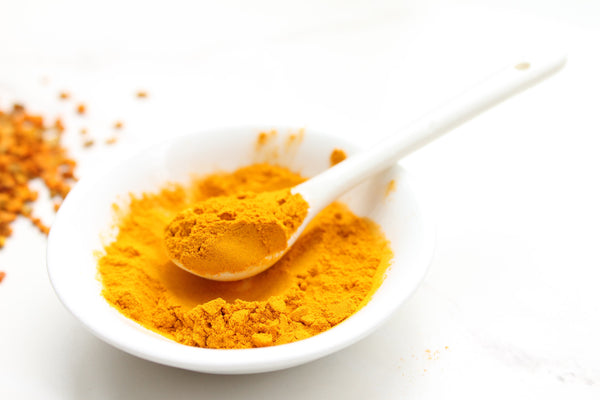

I always thought arthritis and joint pain come with as we age, but I was completely wrong. To my surprise I learned that people of any age could get arthritis, including children. In fact, I’m seeing a lot more of the younger generation suffer from all forms of arthritis. Arthritis can be a crippling degenerative joint disease, but it doesn't have to cripple you. There are healing alternatives to help you manage your arthritis and joint pain.
This past winter I fell and slipped on ice and injured my shoulder. I did nothing about my shoulder injury (not even see a doctor) in hopes that the pain and stiffness would go away with time. It didn’t. After well over 6 months later, I finally decided to get an x-ray and an ultra-sound since my shoulder pain wasn’t disappearing. Sure enough my doctor said my tendons and muscles that help move the shoulder joint were inflamed. My doctor explained if I continued to leave this injury untreated it could lead to degenerative arthritis. He then proceeded to write me a prescription for non-steroidal anti-inflammatory drugs (NSAIDs). I tossed the prescription in the garbage. Why? As a holistic nutritionist, I pride myself on being healthy and healing my body with food. Although NSAIDs treat inflammatory conditions, most of them have side effects, especially when consumed over long periods of time it can cause nutrient depletion and damage to the liver and kidneys.
For the next few of months I was determined to heal my injury on my own, without the use of any pharmaceutical drugs. And I did. I have my full range of motion back in my shoulder and I’m pain free. Below are the natural healing remedies I did to help restore my shoulder, and in fact, these remedies are just as beneficial for anyone who is looking to manage any chronic pain, inflammation and swelling from arthritis.
- Add turmeric to diet — the golden Ayurvedic spice is an extremely powerful anti-inflammatory herb. Therefore making it an effective pain reliever. Turmeric contains an active ingredient known as curcumin, which is responsible for decreasing joint pain and inflammation, and improving joint mobility. Studies show that curcumin has been shown to regulate numerous transcription factors, cytokines, protein kinases, adhesion molecules, redox status and enzymes that have been linked to inflammation. How did I add turmeric to my diet? I drank Turmeric Teas signature blends of organic loose-leaf teas daily. Turmeric Teas is a local Toronto tea company you can trust with natural ingredients and amazing health benefits to reap from. They come in four wonderful flavours, Dawn, Dusk, Winter and Summer, and can be enjoyed throughout the day. I also took a supplemental therapeutic dosage of turmeric daily. Not only was turmeric helping me reduce inflammation in my shoulder, it was also boosting my immunity, reducing my risk for cancer, and detoxing my liver.
- Increase EPA Omega-3 fatty acids — the long-chain fatty acids EPA (eicosapentaenoic acid) is found in flaxseeds, walnuts, sardines, salmon, algae and some animal fat (especially in grass-fed animals). However, over the last decade the consumption of omega-6 has further increased, while the consumption of omega-3 has decreased. In the world of fast food and the Standard American Diet the ratio of omega-6 to omega-3 fats is anywhere between 14:1 and 25:1. This ratio consumption is due to overly processed foods and hydrogenation of vegetable fats. For my injury, I took 1 tsp. daily of Ascenta High EPA omega-3 fish oil, all while cutting out any polyunsaturated vegetable oils (corn, sunflower, safflower, soy, and cottonseed). EPA helps suppress inflammation and reduces muscle and joint pain. Any excessive inflammation and inflammation-related disease is significantly reduced by the production of anti-inflammatory prostaglandins.
- Remove all nightshades - What do tomatoes, peppers, potatoes, eggplant all have in common? Besides being delicious, they are all part of the nightshade family, also known as the Solanaceae. Nightshades include several thousand species of flowering plants that produce an alkaloid compound called solanine. While nightshades may be beneficially healthy for some, it can be inflammatory and problematic for others; especially you're trying to heal from joint pain and inflammation, or an autoimmune disease such as rheumatoid arthritis. A 30-day nightshade elimination diet is worth a try, as you may be surprised to see which foods your body loves and which ones may be problematic. It’s also worth a shot to see if pain/inflammation is significantly reduced.
For me, the best treatment for arthritis or any joint pain is a diet filled with a variety of fresh vegetables and dark leafy greens and essential fatty acids, all while eliminating foods that cause an inflammatory response such as fast foods, hydrogenated vegetable oils and nightshades.
While I found these natural methods to be effective for me, I would recommend you always consult your health care professional, in order to determine the best course of action for YOU, and your pain!
A great and easy way to regularly implement turmeric in your daily diet is through drinking any one of Turmeric Teas signature blends of organic loose-leaf tea, Dawn (Chai), Dusk (Lemongrass), Winter (Ginger) and Summer (Peppermint). These signature blends all contain the powerful healing herb turmeric root, along with black pepper (to help enhance turmeric’s bio-availability and absorption by 2000%).
Blog post by Alexandra Daugherty, CNP • Holistic Nutritionist
